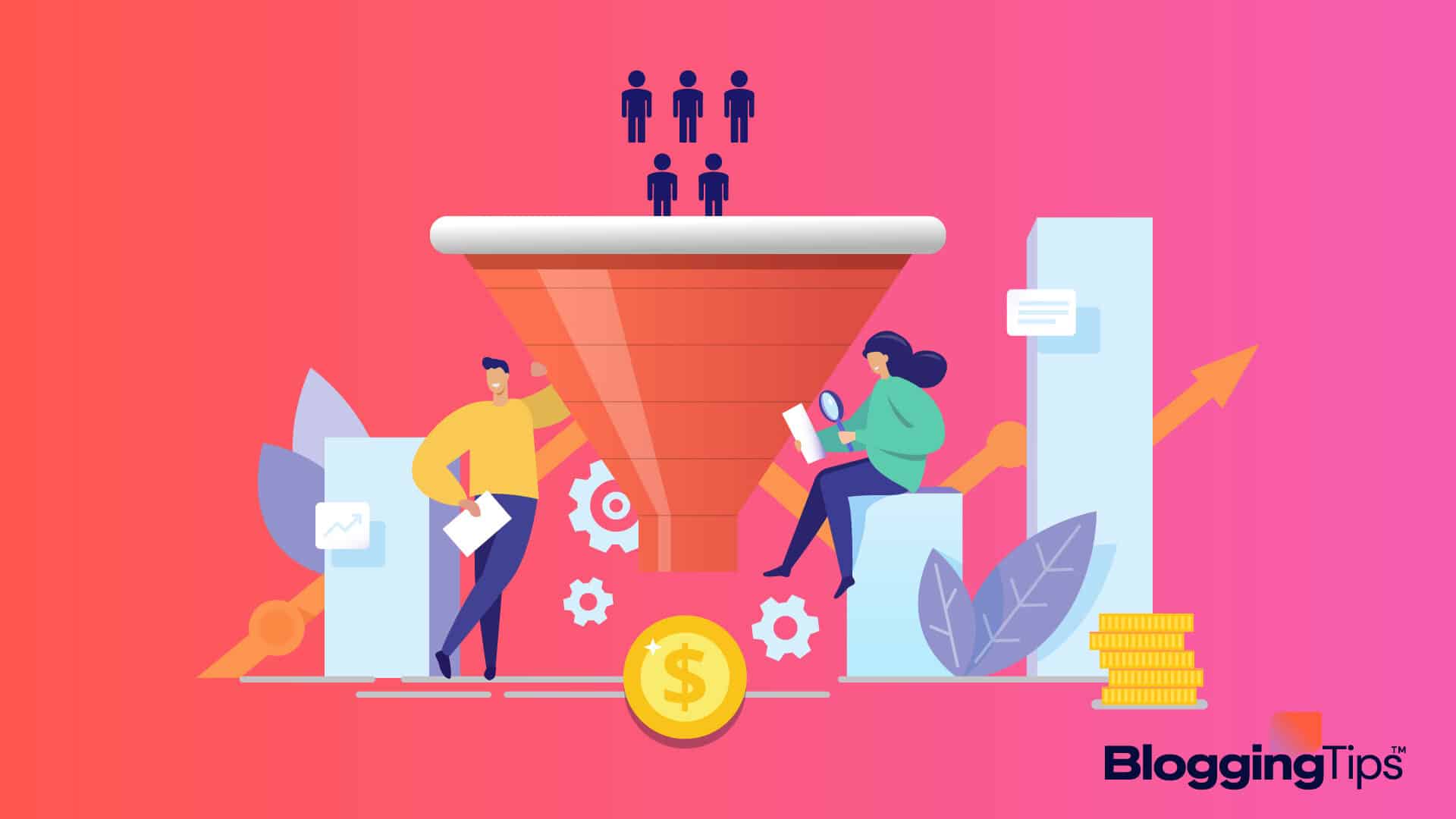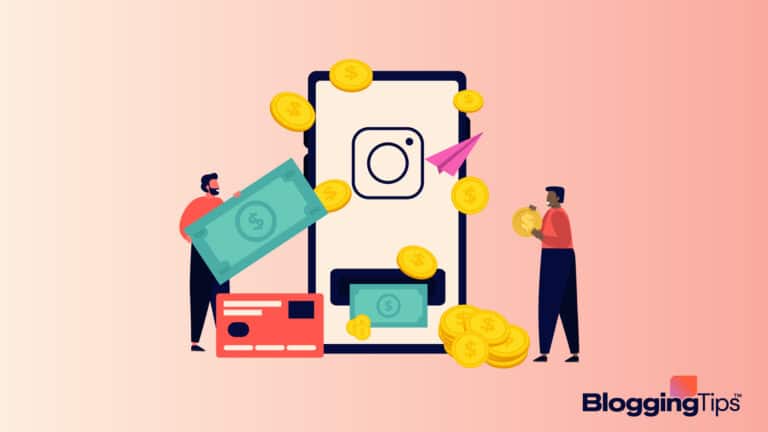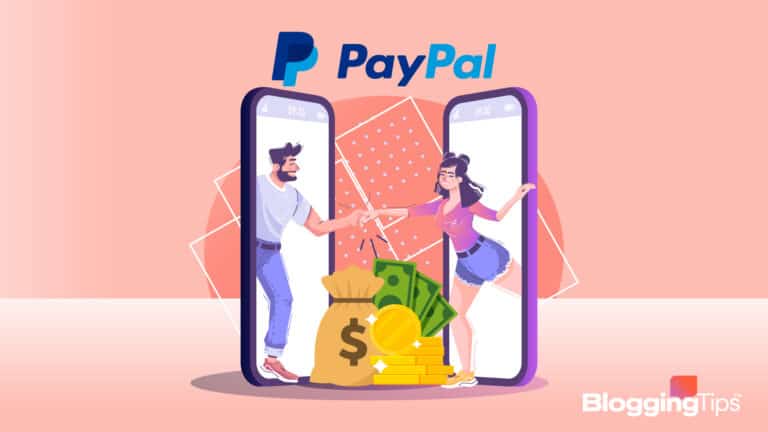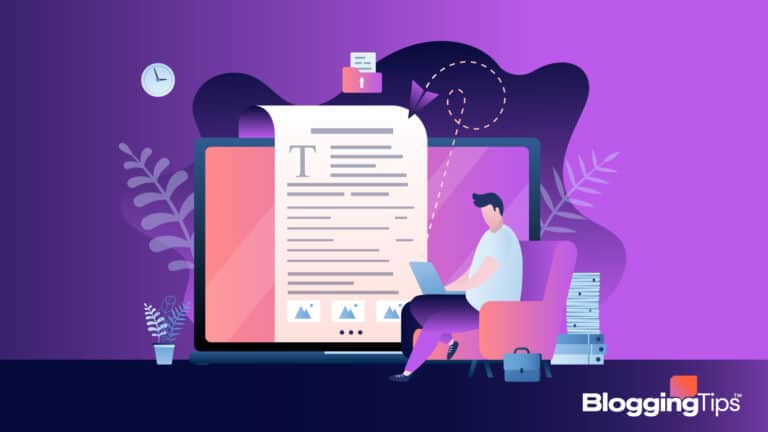Are you a blogger or content creator and don’t know how to monetize your content via affiliate marketing?
Maybe you’ve built an affiliate marketing sales funnel that is not giving you the expected conversion rates.
Whichever category you’re in, there’s no joy in investing time and effort into your content without appropriate rewards.
In this article, we take a deep dive into the affiliate marketing funnel and the best strategies to increase and maximize your earning potential as an affiliate marketer.
Frequently Asked Questions
Below we’ve answered your most frequently asked questions about affiliate marketing funnels.
What is an Affiliate Marketing Funnel?
An affiliate marketing funnel is a visual map of a customer’s journey from the first point of contact with the brand, product, or service to their first purchase and potentially making a return purchase.
It typically consists of four stages: awareness, interest, conversion, and retention.
Can You Do Affiliate Marketing Without a Sales Funnel?
You don’t necessarily need a sales funnel to do affiliate marketing except when most or some of your leads come from paid traffic.
In that case, it is essential to build a sales funnel to recoup some of the money spent on ads.
However, you’ll take your affiliate marketing business to the next level if you build multiple sales funnels.
What is the Best Affiliate Funnel Builder?
One of the best affiliate funnel builders is ClickFunnels. ClickFunnels has the right combination of features and integrations to help you maximize conversions.
Furthermore, the SaaS company has amazing customer support for when you have challenges.
What You’ll Need to Build an Affiliate Marketing Funnel
The items/tools below are necessary to build an affiliate marketing sales funnel.
- Landing Page(s): A landing page can be as simple as a blog page. That said, a landing page is specially created for marketing purposes. It’s where the customer’s journey begins after interacting with an ad or link.
- Opt-in Offer: An opt-in offer encourages a potential customer to take desired actions, such as giving you their email address and granting you permission to contact them, attend an event, etc. You’ll need to develop different opt-in offers for your product(s) or services.
- Affiliate funnel builder: You need an affiliate funnel builder program like ClickFunnels to create functional funnels that convert.
How To Build an Affiliate Marketing Funnel: Step-By-Step Instructions
The information in this section is premised on the foundation that you have a good understanding of the basics of affiliate marketing.
Click here to learn more about affiliate marketing and how to choose high-paying affiliate programs.
Otherwise, let’s dig in.
STEP 1: Define your Target Audience
You can’t build every sales funnel for a broad audience. You can build multiple funnels for different audience segments.
For example, a user who wants to start a new blog would likely pay for a course about starting a blog.
A user who is already running a blog may be more inclined to sign up for a course on optimizing and monetizing a blog.
Therefore, it is imperative to clarify who each affiliate marketing funnel is for.
It’ll be the foundation of everything you do, including the emotion, psychology, and copy for your landing sales page and offers.
Questions to Help You Define Your Target Audience
Use these questions as a checklist to define who you’re targeting. The questions include:
- What do they care about?
- Where can I find them?
- What type of demography do they belong to? It may be helpful to build a persona of your ideal user or lead.
- What’s their psychographic profile?
- What motivates them?
- What are their primary frustrations and pain points, especially with regard to your niche?
These questions would help you define your audience and avoid the mistake of targeting a vague audience.
Lead Generation and Traffic Source
Another benefit of defining your target audience is that it helps you to identify the best way to generate leads or traffic. You can do this based on your audience’s demography and online behavior.
For example, you may run paid Facebook ads if you know that your target audience is on the social media platform.
For any affiliate marketer, organic traffic is also an essential traffic source.
You get organic traffic by providing quality articles that answer user search engine queries (from the pain points you identified).
These articles are search engine optimized (SEO) so that they may rank higher on the results page.
STEP 2: Define Your Goals
In the previous step, you defined your target audience, which you may split into different segments.
For each marketing or sales funnel you want to build, there must be an end goal you wish to accomplish. One goal per sales funnel.
Your goal may be for them to sign up for a course, a webinar, or even to follow you on social media.
Once you’ve defined your goal, it’s easy to create a visual map showing the user’s journey. It’s like standing at a vantage point.
STEP 3: Map Out the Entire Customer Journey
Now it’s time to map out the customer’s journey through the funnel from A-Z.
The best maps or funnel are the ones that get the most people to the end of the funnel, which is sales and then retention.
The map of a simple affiliate funnel may consist of four main steps:
- Blog post to create awareness about the opportunities to work as a freelance writer.
- You can collect emails from those interested by creating an opt-in slider offering the user a free video about choosing a freelance writing niche.
- The next phase is a “Thank You” page where users can watch the free video.
- Make the affiliate offer at the end of the free video for them to order the full course.
Mapping the funnel out like this also helps you create checkpoints in the journey. You can then track at which checkpoint users are dropping off.
Using Logic, Emotions, and Human Psychology
One of the things you must be mindful of is how to leverage emotions and psychology at each stage of the funnel. You can do this using the following:
- Social Proof: Show users what you’ve done in the past and the results. Social proof enhances your credibility. It is inclusive of case studies, customer testimonials, and reviews.
- Elements of Scarcity: Make users feel like they must purchase the product now. You can offer a discount for a limited time only.
- Trust and authority: What makes you the right person to deliver the course? Why must users listen to you? One of the ways to achieve trust is to market quality and reputable affiliate products. Another way is to write honest reviews about each product or service.
- Punchy and creative call-to-action buttons.
STEP 4: Begin Building the Different Components of the Funnel
In this phase, you start building the different parts making up the funnel.
In the simple four-step affiliate funnel example above, here are some of the components you’d need to make:
- A long-form article on how to become a freelance writer. Think of this as the awareness stage. Here’s another example: some people may not have heard about ClickFunnel before, but after reading this article, they know about the product and what it can do.
- The course videos or an introductory video if the course is not yours.
- Opt-in slider integrated with ClickFunnels.
- A thank you landing page for the free video.
- Landing page for the course with testimonials, reviews, and copy showing the value your course offers and the pain points it addresses.
- Email marketing automation series to eventually guide your leads to buy the affiliate product or perform your desired action. You can set up email sequence workflows in ClickFunnels.
STEP 5: Build The Affiliate Marketing Funnel using ClickFunnel and Test it
After building all the essential elements, it’s time to build the funnel in ClickFunnel.
One of the great things about ClickFunnel is that there are many funnel templates to choose from.
There’ll be one that matches your goals. If no template meets your needs, you can create a custom funnel using the drag-and-drop feature.
You can also create multiple versions of your components to see which one converts the most.
For example, you can create three separate landing pages for your offer and pick the one that converts the most after tracking the campaign for a while.
This feature is embedded into ClickFunnels for you to optimize your sales funnels.
STEP 6: Launch your Funnel and Continue Tracking Data
The last step is to launch the funnel and drive traffic to it. You must also continue to monitor its performance.
When analyzing your affiliate marketing funnel data, your visualization will have one of three sales funnel shapes.
1. Classic & Healthy Funnel
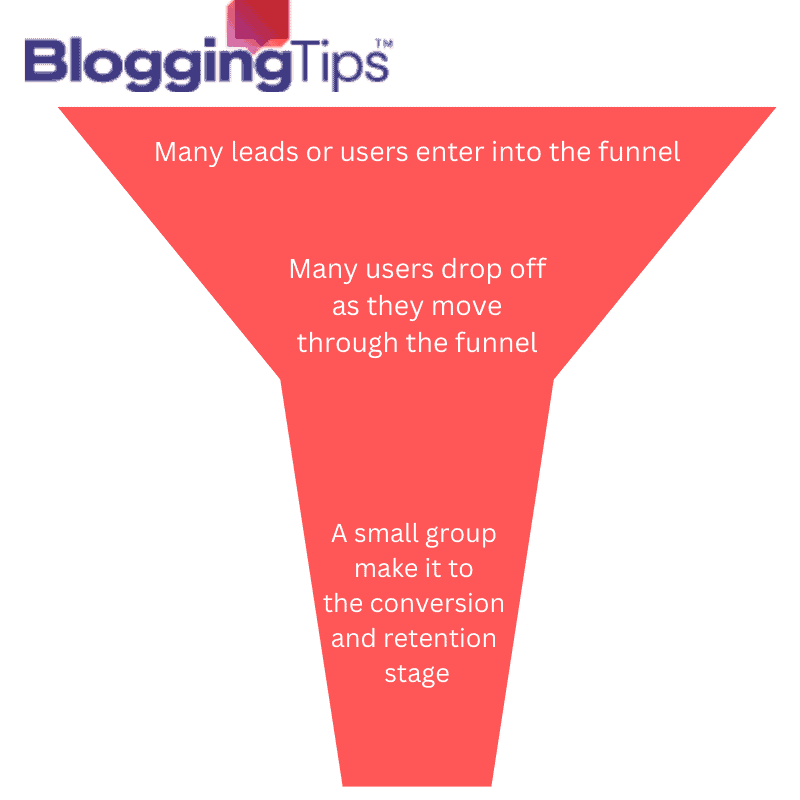
In this scenario, as users go through each stage of the funnel, some will drop off, and some will continue. It’s natural. You cannot have 100% in each stage.
The overall sales conversion rate is typically less than 10%. Data from 2022 shows that eCommerce stores enjoyed overall sales funnel conversion rates between 0.6% and 5.5%.
2. Blockage Funnel
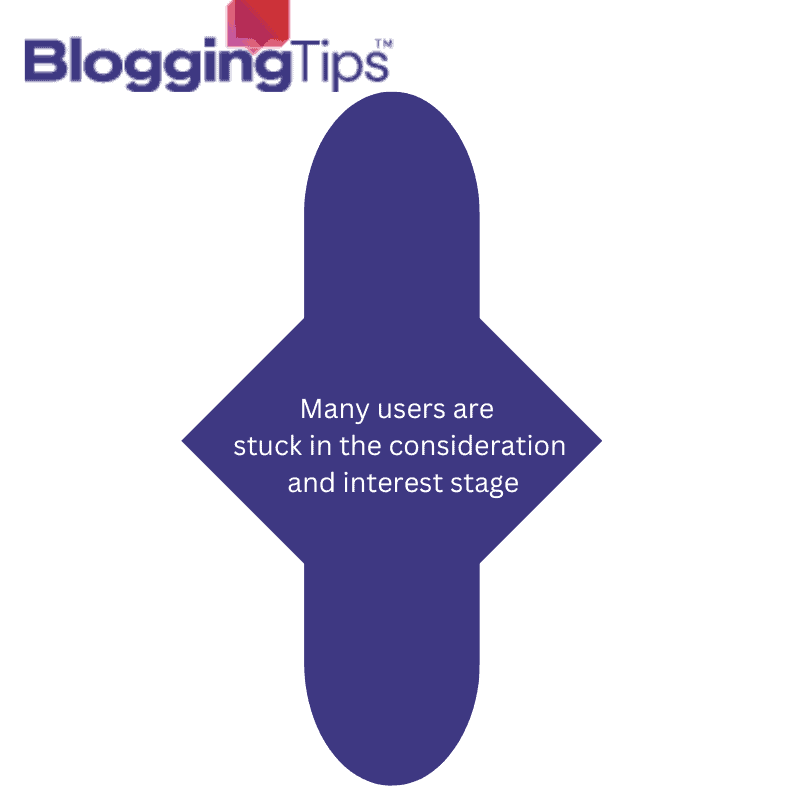
In this funnel, many of your leads are stuck in the awareness or consideration stage. Perhaps they even got to the checkout page but never completed the transaction.
There are many ways to troubleshoot this issue. The first is to double-check that you’re targeting the right audience.
Maybe the persona or audience profile you created was not accurate. Another potential problem may be that the checkout page is not intuitive and easy to use.
Your offer may also be poor.
There could be many reasons why you have a blocked funnel. You’ll have to test, test, and test to get to the root cause.
That’s why it is imperative to test the funnel after building before investing massively in it.
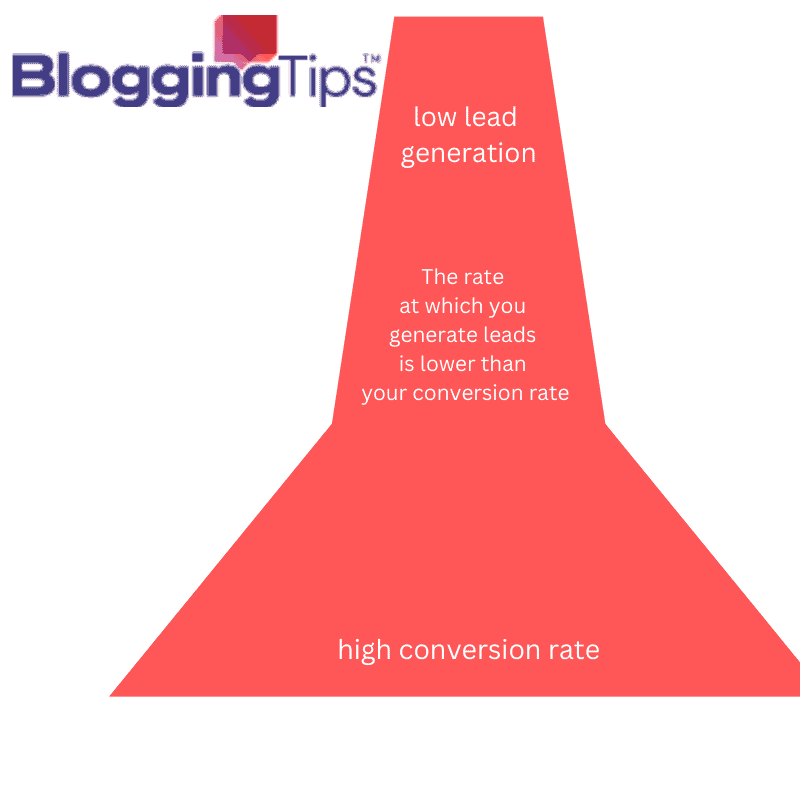
3. Reverse or Feast and Famine Funnel
You may enjoy very high conversion rates, but your total sales are small because the number of leads entering the funnel is small.
High conversion rates may seem initially great, but if you do not deal with the lead generation issue, you’ll likely not have any sales in the future.
The usual causes of this type of funnel are the quality of your lead magnet and search engine optimization strategy.
Do users immediately bounce when they get to the page? That might be a sign that the page doesn’t answer any of the users’ pain points.
Other technical details may be a slow website or poor web design.
Similar Tutorials Types to Check Out
We have handpicked the tutorials below to complement the information in this article. They’ll be of great help to you.
- How to Succeed With Affiliate Marketing: There’s a lot of information online about becoming an affiliate marketer, but very little on how to be successful. This tutorial focuses on the latter.
- How to Make Money With ClickBank: Have you heard of ClickBank and wondered how you could make money from it? This guide shares how to make money with ClickBank.
- How to Start Affiliate Marketing: Do you want to start affiliate marketing but don’t know what you should do first? This article shares the A-Z of becoming an affiliate marketer.
Wrapping Up: Affiliate Marketing Funnel
While building an affiliate marketing funnel is not simple, it is tremendously rewarding. You’ll understand your blogging business better.
You’ll also be able to continually earn revenue after setting up automation workflows.
In six straightforward steps, you’ll have built a system to generate more income and repeat affiliate campaign success.
Are you thinking of creating an affiliate marketing sales funnel and have other questions we did not answer in this article?
Shoot us those questions in the comment section, and we’ll respond ASAP.
